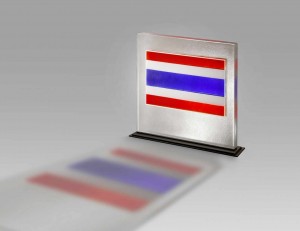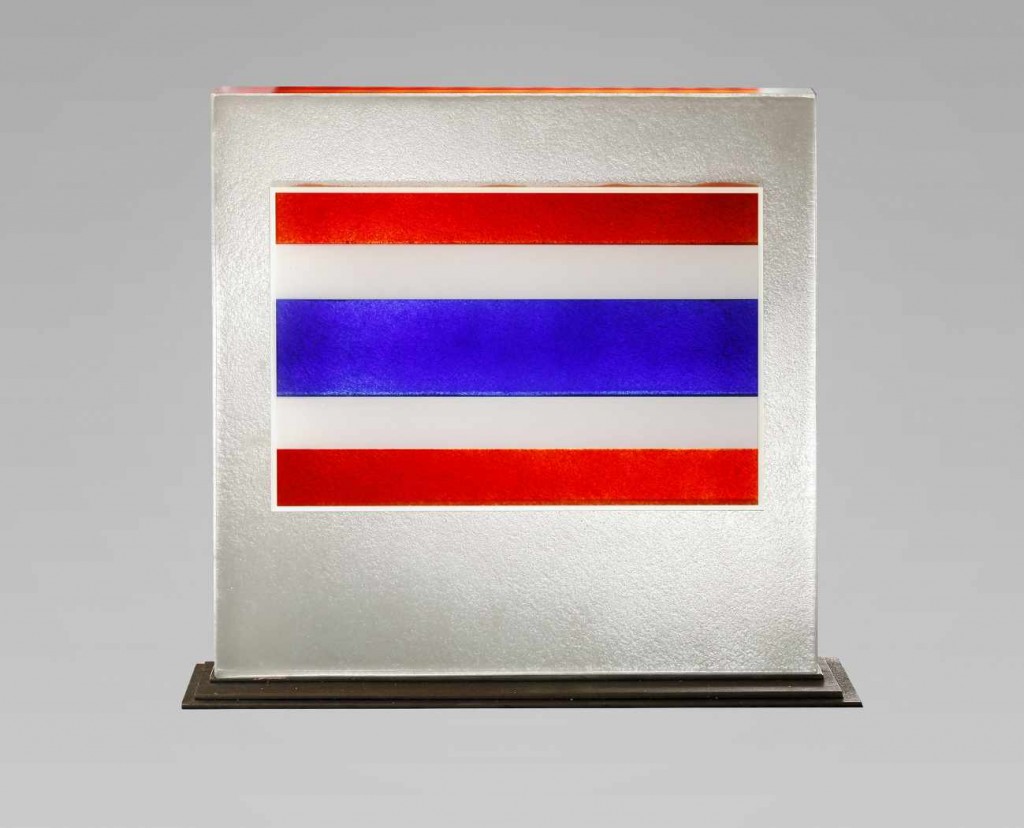 Return the 2011 summary
Return the 2011 summary
 Work available
Work available
Thailand
2011
50 x 50 x 3,6 cm | 28 kg
Fused multilayer glass with inclusion of pigments ![]()
Le drapeau actuel date de 1917, moment où le roi Rama VI ordonna qu’on le change pour qu’il soit en harmonie avec les drapeaux des pays alliés (France et Angleterre).
Il décréta qu’il aurait trois couleurs disposées en bandes rouges, blanches, bleue.
Depuis l’âge d’or d’Ayutthaya (1590-1605), la Thaïlande utilisait un drapeau rouge sur lequel on avait rajouté l’image d’un éléphant blanc dans la roue de Vishnou au centre. Les éléphants blancs étaient perçus comme un signe d’extrêmement bon augure pour la nation.
According to legend, on September 12, 1916, King Rama VI, traveling in the north, noticed that the flag had been raised upside down, presenting the elephant with its legs in the air, lying on its back. To prevent this from happening again, he decided it was best to remove the elephant from the flag.
Blue, the traditional color of the country, represents the king, head of the country, white represents faith and purity, red the patriotic struggle and solidarity between Thais.
Click on the images to zoom
Official name: Kingdom of Thailand
Nickname : the land of smiles
Continent: Asia | Capital: Bangkok
Area: 514,000 km2
Population (2008): 65 493 298 habitants
Official language: Thai | Currency: baht
Border countries: Myanmar (Birmanie), Cambodge, Laos, Malaisie
National holiday: 5 décembre
Motto: Homeland, religion, king – The unity of the people brings success and prosperity
Member of the United Nations: December 16, 1946
Member of UNESCO: January 1, 1949


